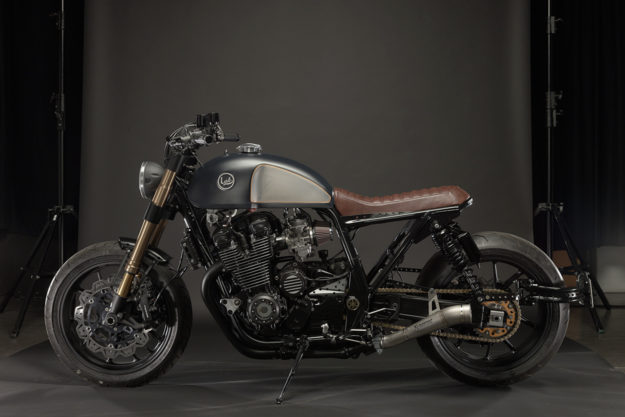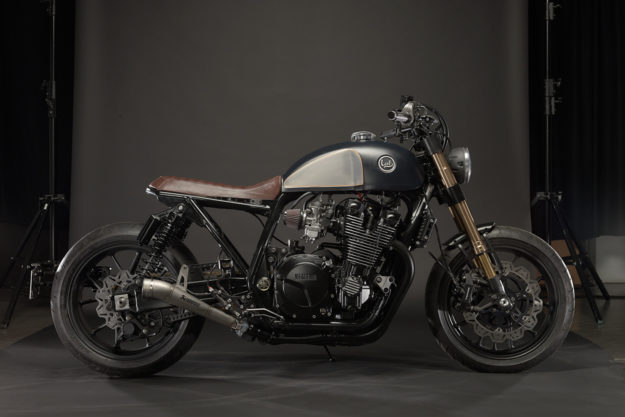
A half-chopped Yamaha, a head full of crazy ideas and a friendly wager: those were the ingredients for Jorge Rodrigues’ first build. And the results are pretty tasty.
Jorge is a director at a software firm in Portugal—but more importantly, he’s a motorcyclist who’s always wanted to build a custom bike. So he sourced a 1998 Yamaha XJR 1200 and got busy.
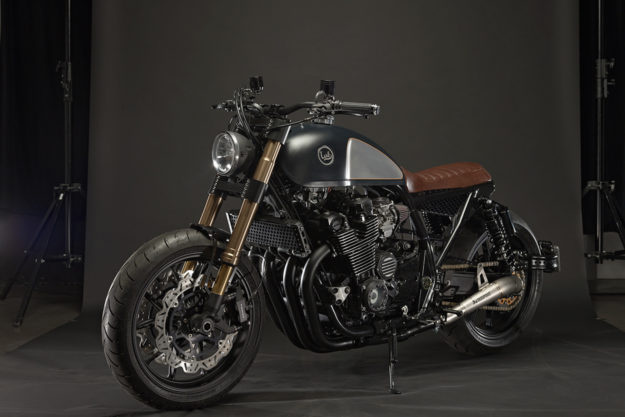
“The Yamaha XJR has one defining characteristic: its engine,” he says. “This build had to be done around the engine, it had to exude power and show it, shed a ton of weight, be comfortable enough to ride all day and have a classic look. The ‘BMW R nineT‘ that Yamaha could have built.”
Jorge now calls his bike the ‘Yamaha XJR9T’—but getting it there was no easy task.
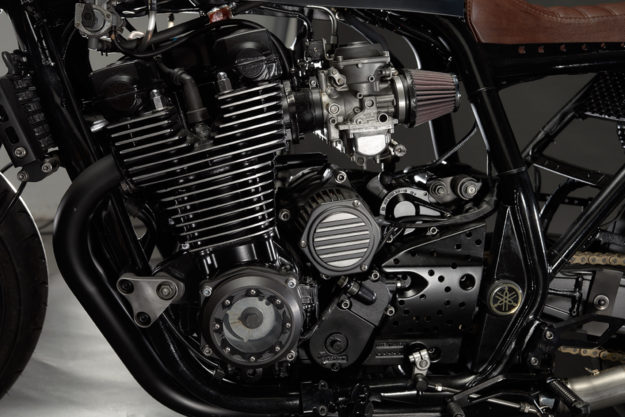
“When I bought it last year, it was already partially converted to a cafe racer. But with cheap parts, bad electrics, and a very bad paint job,” he explains. “The only parts that are left from the ‘original’ bike are the engine, frame and swing arm. Everything else is new.”
Reinforcements were called in: Pedro Bacalhau from Lab Motorcycle, and Francisco Castro Ribeiro from RNM. Jorge would handle the design, order all the requisite parts, revamp the engine and carbs and handle final touches like cable routing. Lab were responsible for the paint, electrics, fabrication and assembly; and RNM tackled suspension, wheels and brakes.
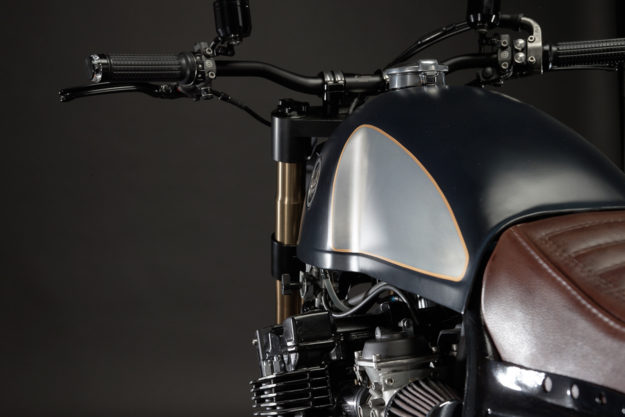
Focusing on aesthetics, Jorge wanted a new fuel tank that would give the XJR 1200 a modern classic look—and accentuate the engine’s heft. A replica Benelli Mojave unit fit the bill, along with a Monza-style cap for an extra classic hit.
Jorge picked a black satin finish for the tank, with a gold pinstripe outlining areas of raw metal. Behind it is a brown leather seat, sitting on a revised subframe. A small front fender finishes off the bodywork.
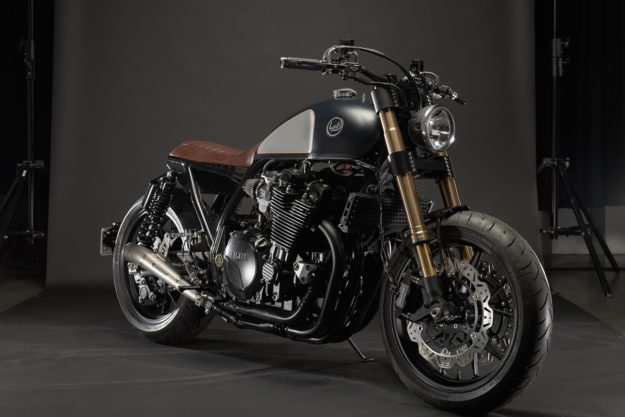
“The bike should not only look good but also be a better, more sporty ride than the original XJR,” says Jorge. His first step was to put the big four on a serious diet, shedding nearly 40kg of unwanted baggage.
On went the forks and front brakes from a 2010 Suzuki GSX-R, clamped into a set of CNC machined triples brought in from the UK. The 17” wheels were borrowed from a Ducati 999.
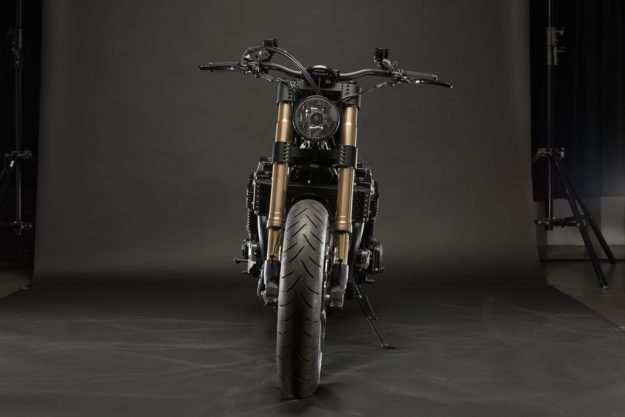
Ditching the airbox saved some weight too, as did fitting a titanium exhaust system from Akrapovič. Between the new exhaust, K&N filters and Dynojet stage 3 kit, the guys have managed to squeeze an estimated twenty to thirty extra horses out of the XJR.
“After a little fine tuning it corners and drives much faster than the original,” Jorge confirms, “without losing the renowned smoothness of the XJR engine: any gear, any time.”
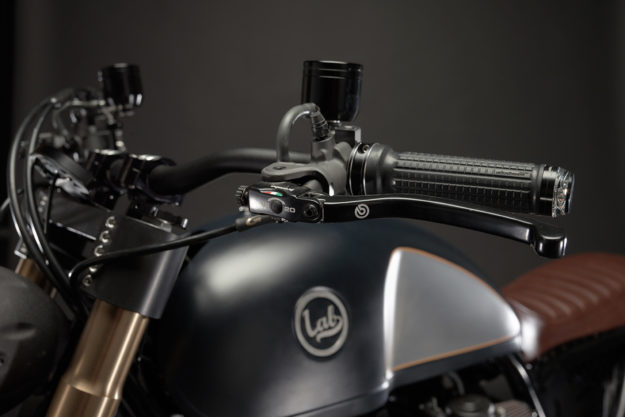
Special consideration went into the finishing kit too. The handlebars, risers and fluid reservoirs are from Rizoma, while the controls themselves are Brembo items. The grips, bar-end turn signals, switches and digital dash are all Motogadget parts.
The rear-sets are aluminum units, and the taillight is an LED, embedded into the frame’s rear loop. There are smaller details to admire too: like the license plate bracket, or the drilled parts scattered throughout the bike.
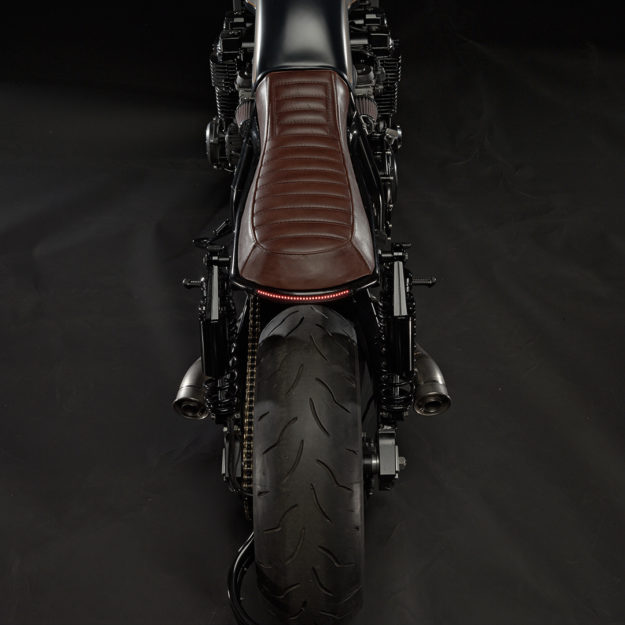
The build took a year to complete, with a number of twists along the way: “The adaptation of Ducati wheels to GSX-R suspension and XJR triple clamps was interesting, the rear brake a puzzle, the tank adaptation a challenge. There are dual fuel taps on the Mojave, but only one on the XJR; and the electrics required a total rebuild.”
“The biggest riding compromise comes from the much smaller size of the Mojave tank. It needs refueling every 140km!”

Jorge made a point of thanking Pedro and Francisco for their help. We’re just glad to see the right people come together to build something beautiful.
As for that wager we mentioned: “Last year I made a bet with a colleague from work that my first build would end up on Bike EXIF (we are both fans). Thus, here we are at the moment of truth.”
Well played, sir.
Lab Motorcycle | RNM | Images by João Bettencourt
